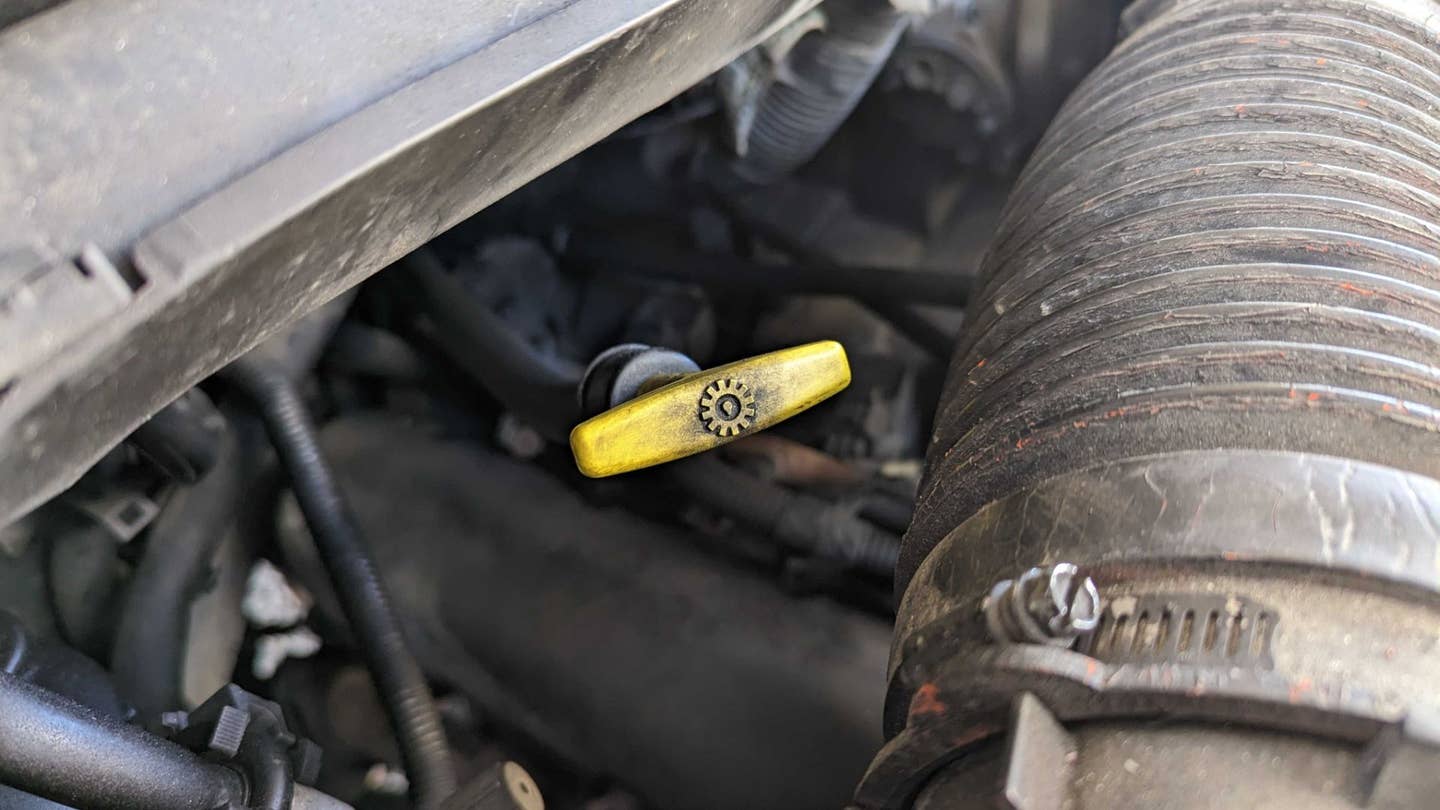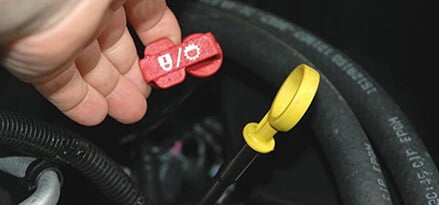- Jeep Cherokee Push Button Start Not Working: Troubleshooting Tips To Get You Back on the Road Fast! - 11 November 2023
- Haval H2 Problems: The Complete Troubleshooting Guide - 11 November 2023
- Gwm P Series Problems: Troubleshooting Guide for Common Issues - 11 November 2023
You can add transmission fluid when the car is hot, but it’s not typically recommended. It’s best to check and add the fluid after the car has warmed up to its optimal temperature.
When it comes to maintaining your car’s transmission, it’s important to understand the proper procedures for adding transmission fluid. One common question that arises is whether you can add transmission fluid when the car is hot. We will discuss the effects of adding transmission fluid when the engine is hot and provide some recommendations based on expert advice.
It is crucial to follow the manufacturer’s instructions and adhere to the correct procedures to ensure the longevity and efficiency of your vehicle’s transmission. By understanding the importance of checking the fluid level when the engine is warm, you can make informed decisions about adding transmission fluid to your car.
Best Practices For Adding Transmission Fluid
When it comes to maintaining your vehicle’s transmission, adding fluid is an essential task. However, it’s crucial to follow the correct procedures to ensure optimal performance and prevent potential damage. In this section, we will highlight the best practices for adding transmission fluid, including the importance of checking the fluid level while your transmission is running and the fluid is warm.
Check The Fluid Level While Your Transmission Is Running And The Fluid Is Warm
For accurate results, it is recommended to check the transmission fluid level while your vehicle is running and the fluid is warm. This allows the fluid to circulate throughout the transmission, giving you a more accurate reading. To check the level, follow these steps:
- Ensure that the car is in park or neutral and the transmission is warmed up.
- Locate the transmission dipstick, which is usually labeled and located near the engine.
- Remove the dipstick, wipe it clean, and reinsert it into the dipstick tube fully.
- Remove the dipstick again and observe the fluid level. It should be within the recommended range indicated on the dipstick.
Follow The Manufacturer’s Procedures For Checking The Fluid Level
It is crucial to consult your vehicle’s manufacturer’s manual for specific instructions on how to check the transmission fluid level. Different vehicle models may have slightly different procedures, such as checking the level with the engine running or with the gear selector in a specific position. Adhering to the manufacturer’s recommendations ensures an accurate reading and prevents any potential damage to your transmission.
Remember, if you are unsure about how to check the fluid level or have any concerns, it is always best to consult a professional mechanic or refer to your vehicle’s manual for guidance.
By following these best practices for adding transmission fluid, you can ensure the longevity and smooth operation of your vehicle’s transmission. Regularly checking and maintaining the proper fluid level is a key factor in preventing transmission issues and costly repairs.
Effect Of Adding Transmission Fluid When Engine Is Hot
Adding transmission fluid when the engine is hot is not typically recommended, but it can be done. It is best to check and add the fluid after the car has warmed up and is at optimal temperature. Following the manufacturer’s procedures is important for an accurate fluid reading.
Understand The Impact Of Adding Transmission Fluid When The Engine Is Hot
Adding transmission fluid to your car while the engine is hot can have certain effects on the overall performance and longevity of your transmission. It is important to understand these impacts in order to make an informed decision about when to add fluid.
Explore The Need For Accurate Fluid Reading And Temperature Considerations
Accurate fluid reading is crucial when it comes to maintaining the health of your transmission. This is because the fluid level directly affects the lubrication and cooling of the transmission components. Checking the fluid level while the engine is hot ensures that you get a true representation of the amount of fluid in your transmission.
Moreover, temperature considerations play a vital role in maintaining the consistency and performance of the transmission fluid. The fluid needs to be at the optimal operating temperature to provide effective lubrication and prevent overheating. Adding fluid when the engine is hot allows you to maintain the ideal operating temperature without compromising the transmission’s functionality.
Ensure Accurate Fluid Reading By Following Manufacturer’s Procedures
It is important to follow the manufacturer’s procedures when checking the fluid level. This typically involves running the engine, having the car in park or neutral, and allowing the transmission to warm up. By adhering to these guidelines, you can ensure that the fluid reading is accurate and reliable.
Considerations For Adding Fluid To A Hot Engine
While it is possible to add transmission fluid when the car is hot, it is generally not recommended. The main reason for this is that the fluid expands when heated, which can result in overfilling the transmission. Overfilling can lead to excessive pressure and cause damage to the transmission components.
However, if you need to add fluid to a hot engine, there are a few precautions you can take. Firstly, make sure to wait for the engine to cool down slightly before adding fluid. This will help prevent any sudden expansion and minimize the risk of overfilling. Additionally, it is advisable to add fluid in small increments and recheck the fluid level frequently to ensure it is within the recommended range.
By understanding the impact of adding transmission fluid when the engine is hot and following the necessary precautions, you can maintain the health and performance of your transmission.
Factors To Consider When Adding Transmission Fluid
You can add transmission fluid to your car when it’s hot, but it’s not usually recommended. It’s best to check and add fluid after the car has warmed up to the optimal temperature. Adding fluid when the engine is hot can cause the transmission to overheat.
Learn About The Recommended Practices For Adding Transmission Fluid
When it comes to adding transmission fluid to your car, it is essential to follow the recommended practices to ensure proper maintenance and performance. Here are some important factors to consider:1. Check the fluid level when the engine is running: To obtain an accurate reading of the transmission fluid level, it is best to check it while the engine is running. This is because the fluid needs to circulate through the transmission for an accurate measurement.2. Warm up the transmission fluid: Before checking or adding fluid, it is important to warm up the transmission fluid. This helps to ensure that the fluid is at its optimal temperature for accurate measurements. You can do this by driving the car for a few minutes or allowing it to idle for a while.3. Follow the manufacturer’s guidelines: Every vehicle has specific procedures outlined by the manufacturer for checking and adding transmission fluid. It is crucial to refer to the owner’s manual or manufacturer’s guidelines to ensure you are following the correct steps.4. Utilize the correct transmission fluid: Another important aspect to consider is using the correct type of transmission fluid. Different vehicles have different fluid requirements, and using the wrong fluid can lead to performance issues or damage to the transmission. Consult the owner’s manual or a trusted mechanic to determine the appropriate type of fluid for your vehicle.Understand Why Adding Fluid When The Car Is Hot Is Not Typically Recommended
While it is technically possible to add transmission fluid when the car is hot, it is not typically recommended. Here’s why:1. Risk of overfilling: When the transmission is hot, it can be more challenging to get an accurate measurement of the fluid level. This increases the risk of overfilling, which can lead to various problems, including foaming, inadequate lubrication, and increased pressure on the seals and gaskets.2. Potential for burns: Working with hot fluids poses a risk of burns. Since the transmission fluid can reach high temperatures when the car is hot, there is a higher chance of accidental burns when adding fluid.3. Inaccurate measurements: When the transmission is hot, the fluid expands, affecting the accuracy of the measurement. Adding fluid based on an inaccurate reading can result in issues with the transmission’s performance and longevity.Consider The Optimal Conditions For Adding Transmission Fluid
It is important to add transmission fluid under optimal conditions to ensure accurate readings and minimize the risk of problems. Here are the optimal conditions for adding transmission fluid:1. The engine should be warm, not hot: Wait for the engine to warm up to its operating temperature, but not excessively hot. This ensures that the fluid is at the right temperature for accurate measurements.2. The car should be parked on level ground: Park your car on a level surface to prevent any measurement discrepancies that can occur on an incline.3. Follow the specific instructions for your vehicle: Different vehicles may have different requirements for adding fluid. Refer to the manufacturer’s guidelines or consult a trusted source to ensure you are following the correct procedure for your specific vehicle.By adhering to these factors and taking the necessary precautions, you can ensure proper maintenance and optimal performance of your transmission system.Common Misconceptions About Adding Transmission Fluid
There are certain misconceptions when it comes to adding transmission fluid to a car, especially when it is hot. Let’s address these misconceptions and provide some insights on the best practices for adding transmission fluid.
H3address The Misconception Of Needing The Car Running To Add Transmission Fluid/h3
Contrary to popular belief, you do not need the vehicle running to add transmission fluid. While it is true that you need to follow the manufacturer’s procedures for checking the fluid level, adding fluid can be done without the engine running. The key here is to ensure that the engine is not hot, as adding fluid to a hot engine can be dangerous and lead to potential risks.
When adding transmission fluid, it is best to have the engine turned off and allow it to cool down before proceeding. This ensures your safety and prevents any potential damage to the transmission system.
H3provide Insights On The Risks Of Overfilling And The Importance Of Idling The Car/h3
One common misconception is that adding transmission fluid while the car is hot is recommended. While it is possible to add fluid when the car is hot, it is not typically advised due to the risks associated with overfilling.
Overfilling the transmission can lead to excessive pressure within the system, which can cause damage to the seals, gaskets, and other internal components. Furthermore, overfilled fluid may foam, reducing its ability to properly lubricate the transmission, resulting in poor performance and potential long-term damage.
To prevent overfilling, it is crucial to idle the car while adding transmission fluid. Idling the car allows the fluid to circulate and settle, ensuring an accurate reading of the fluid level. This also ensures that the fluid is evenly distributed throughout the transmission system.
In summary, while it is technically possible to add transmission fluid when the car is hot, it is not recommended due to the associated risks. It is essential to follow the manufacturer’s guidelines, turn off the engine, and allow it to cool down before adding fluid. Additionally, idling the car during the fluid adding process helps prevent overfilling and ensures proper circulation for accurate readings.
Proper Procedure To Check And Add Transmission Fluid
When it comes to checking and adding transmission fluid, it is generally recommended to follow the manufacturer’s procedure, which usually involves checking the fluid level while the engine is running and the transmission is warmed up. While you can add transmission fluid when the car is hot, it’s not typically recommended to do so.
Step-by-step Guide On How To Check And Add Transmission Fluid
Checking and maintaining the appropriate level of transmission fluid is crucial for the smooth operation of your vehicle’s transmission system. Follow the step-by-step guide below to ensure you perform the procedure correctly:
- Park your car on a level surface and engage the parking brake to ensure it remains stationary throughout the process.
- Locate the transmission dipstick. It’s usually labeled with a bright-colored handle and can be found towards the back of the engine bay.
- With the engine running and the transmission warmed up, carefully remove the dipstick and wipe it clean using a lint-free cloth.
- Reinsert the dipstick fully into its tube and remove it again to check the fluid level.
- Observe the dipstick markings or indicators to determine the fluid level. Typically, there will be “Full” and “Add” marks or specific labeling indicating the correct level.
- If the fluid level is below the recommended mark, it’s necessary to add transmission fluid.
- Using a small funnel, pour the appropriate fluid gradually into the transmission dipstick tube.
- Continuously check the fluid level as you add it to avoid overfilling.
- Repeat the process until the fluid level reaches the recommended mark on the dipstick.
- Once the desired level is achieved, securely reinsert the dipstick and ensure it is fully seated.
- Finally, start the engine and allow it to run for a few minutes to warm up the transmission fluid.
- Recheck the fluid level and adjust if necessary to maintain it within the recommended range.
Importance Of Maintaining The Fluid At The Appropriate Level
Maintaining the transmission fluid at the appropriate level is crucial for the overall performance and longevity of your vehicle’s transmission system. Adequate fluid levels ensure proper lubrication, cooling, and smooth operation of the transmission components. Operating with low fluid levels can lead to increased friction, overheating, and potentially severe damage to the transmission system.
Tips And Precautions For A Successful Transmission Fluid Check And Addition
Follow these tips and precautions to ensure a successful transmission fluid check and addition:
- Always refer to your vehicle’s manufacturer’s guidelines and specifications for checking and adding transmission fluid.
- Perform the procedure on a level surface to get accurate fluid level readings.
- Use a lint-free cloth to wipe the dipstick clean before checking the fluid level.
- Avoid overfilling the transmission by adding fluid gradually and rechecking the level frequently.
- Use the recommended type and grade of transmission fluid as specified in your vehicle’s manual.
- Ensure the dipstick is securely reinserted and fully seated to prevent any potential leaks or inaccuracies.
- Regularly inspect the transmission system for any signs of leaks or abnormal fluid discoloration, which may indicate a problem that requires professional attention.

Credit: www.thedrive.com
Frequently Asked Questions On Can You Add Transmission Fluid When Car Is Hot
Does Your Engine Need To Be Cool To Add Transmission Fluid?
No, your engine doesn’t need to be cool to add transmission fluid. You can add the fluid without the vehicle running, but you should follow the manufacturer’s procedures, which typically require the engine to be running, the car in park or neutral, and the transmission warmed up.
What Are Signs Of Low Transmission Fluid?
Signs of low transmission fluid include grinding noises, shaking when shifting, delays between gears, transmission slipping, no shifting at all, transmission overheating, check engine light, and a burning smell. Transmission fluid keeps your transmission lubricated and prevents it from overheating.
How Hot Is Too Hot For Transmission Fluid?
Transmission fluid should not exceed 200°F (93°C). Beyond this temperature, it can start to break down, causing damage to the transmission. It is important to monitor and regulate the temperature of the transmission fluid to prevent overheating.
Can Your Car Overheat From Low Transmission Fluid?
Low transmission fluid can cause your car to overheat. Insufficient or bad transmission fluid leads to improper lubrication, higher friction, and increased heat, resulting in overheating.
Can You Add Transmission Fluid When The Car Is Hot?
No, it’s not typically recommended to add transmission fluid when the car is hot. It’s best to check and add the fluid after the car has warmed up.
Conclusion
It is possible to add transmission fluid when the car is hot, but it is generally not recommended. Manufacturers usually advise checking and adding transmission fluid with the engine running, car in park or neutral, and transmission warmed up. This ensures an accurate reading and proper fluid levels.
Adding fluid while the engine is hot may affect the accuracy of the reading and potentially cause overfilling. It is best to follow the manufacturer’s guidelines to maintain the optimal condition of your transmission.


